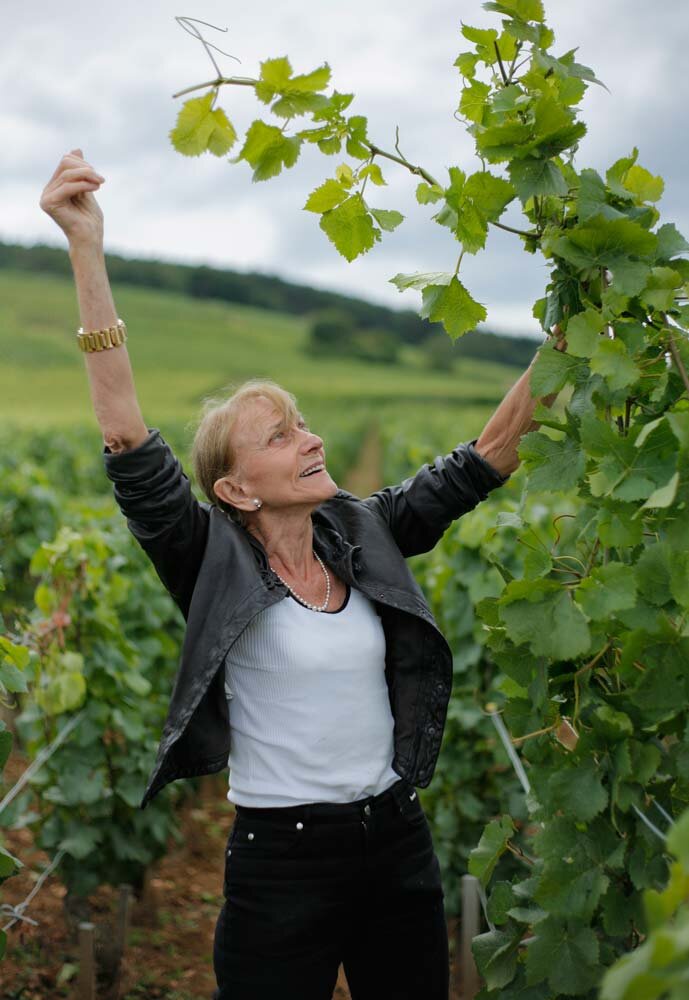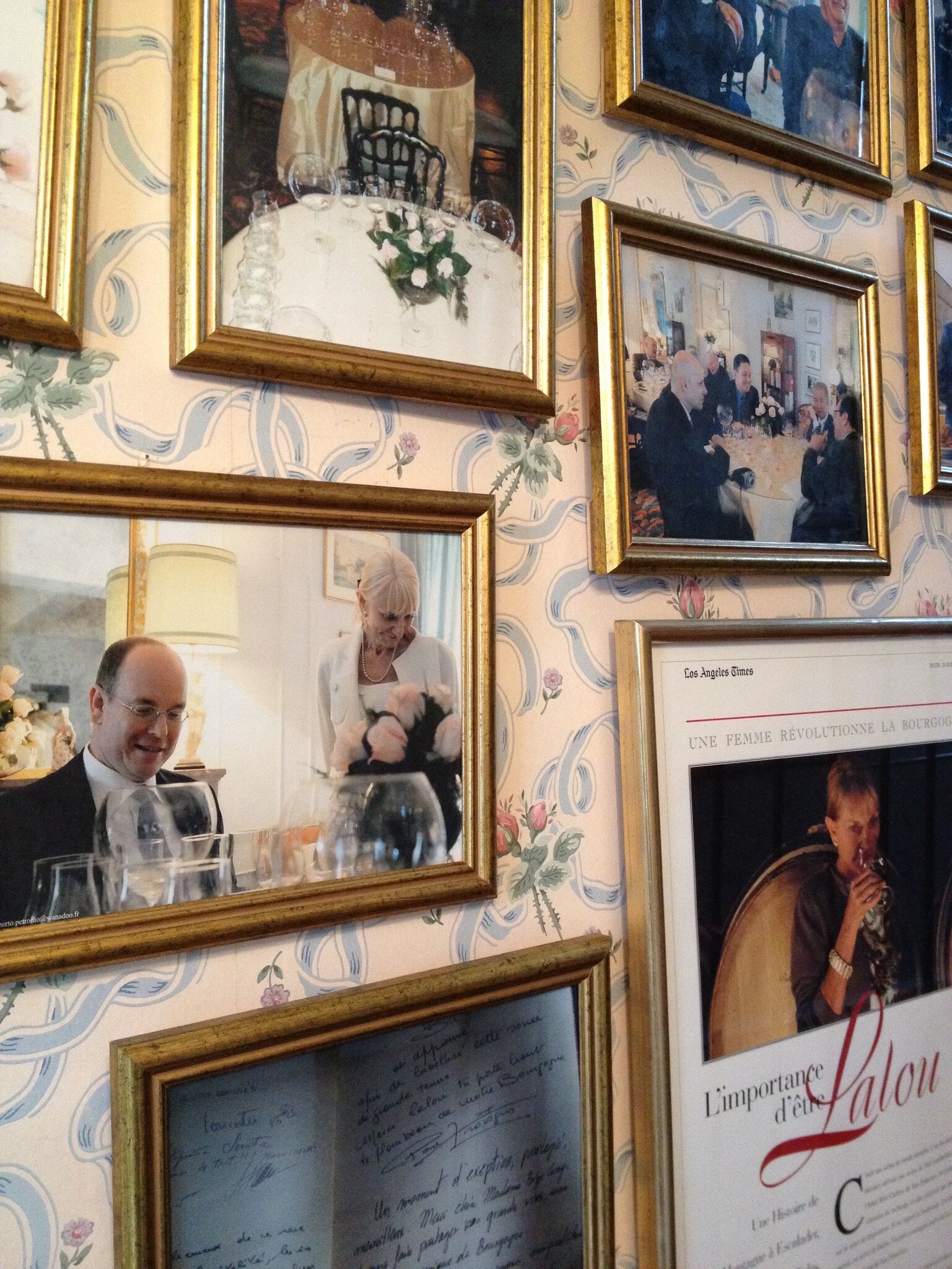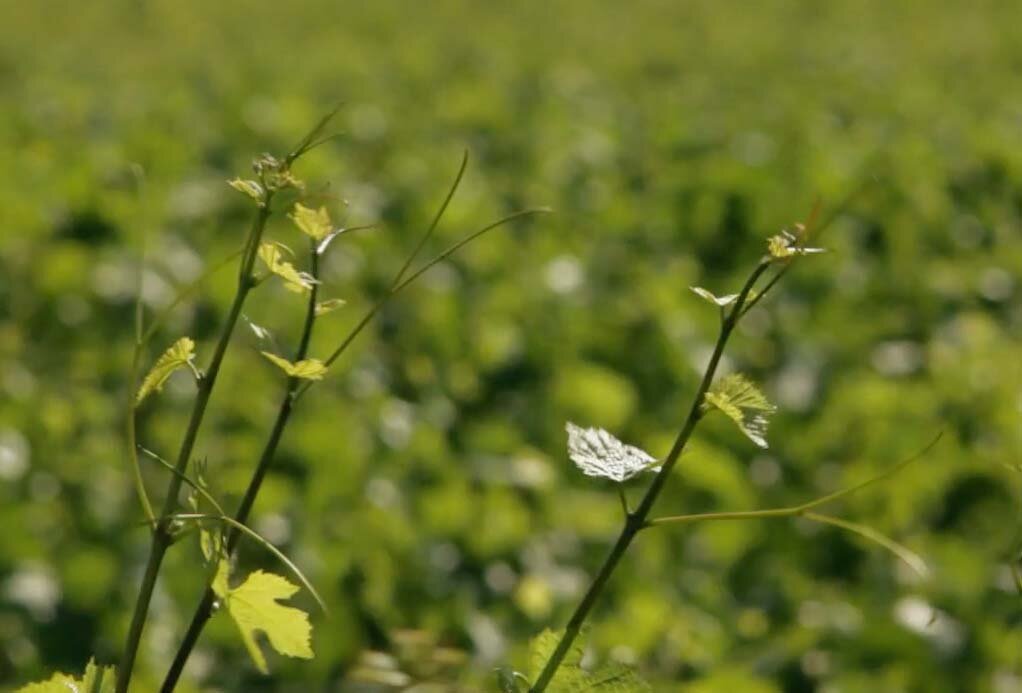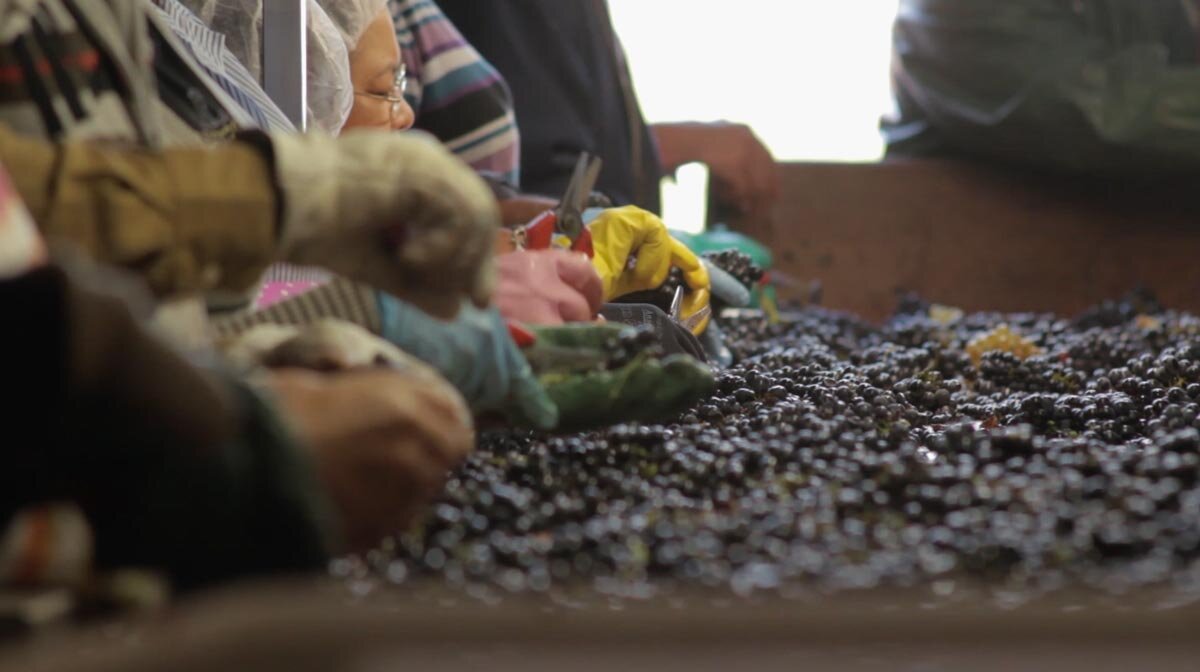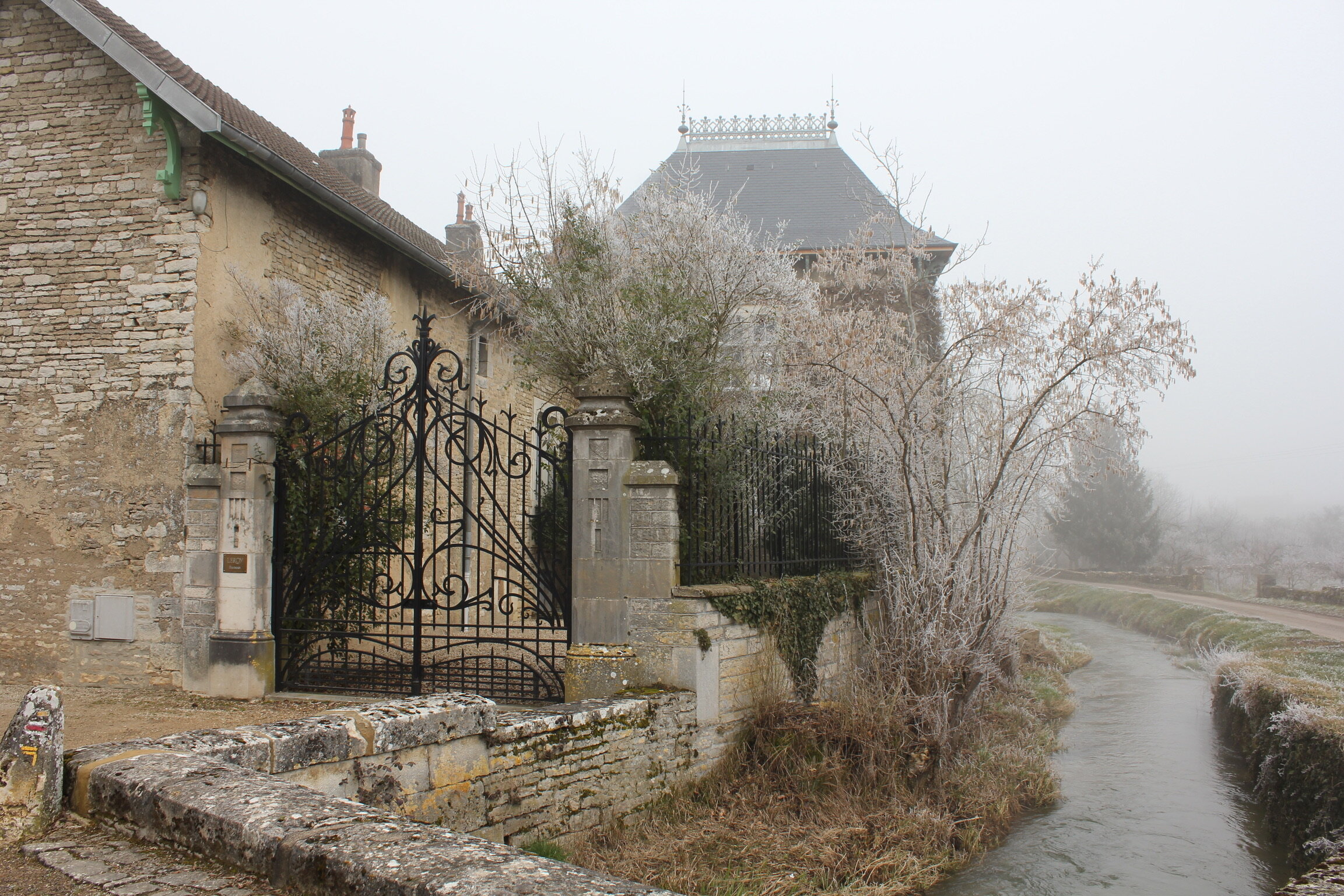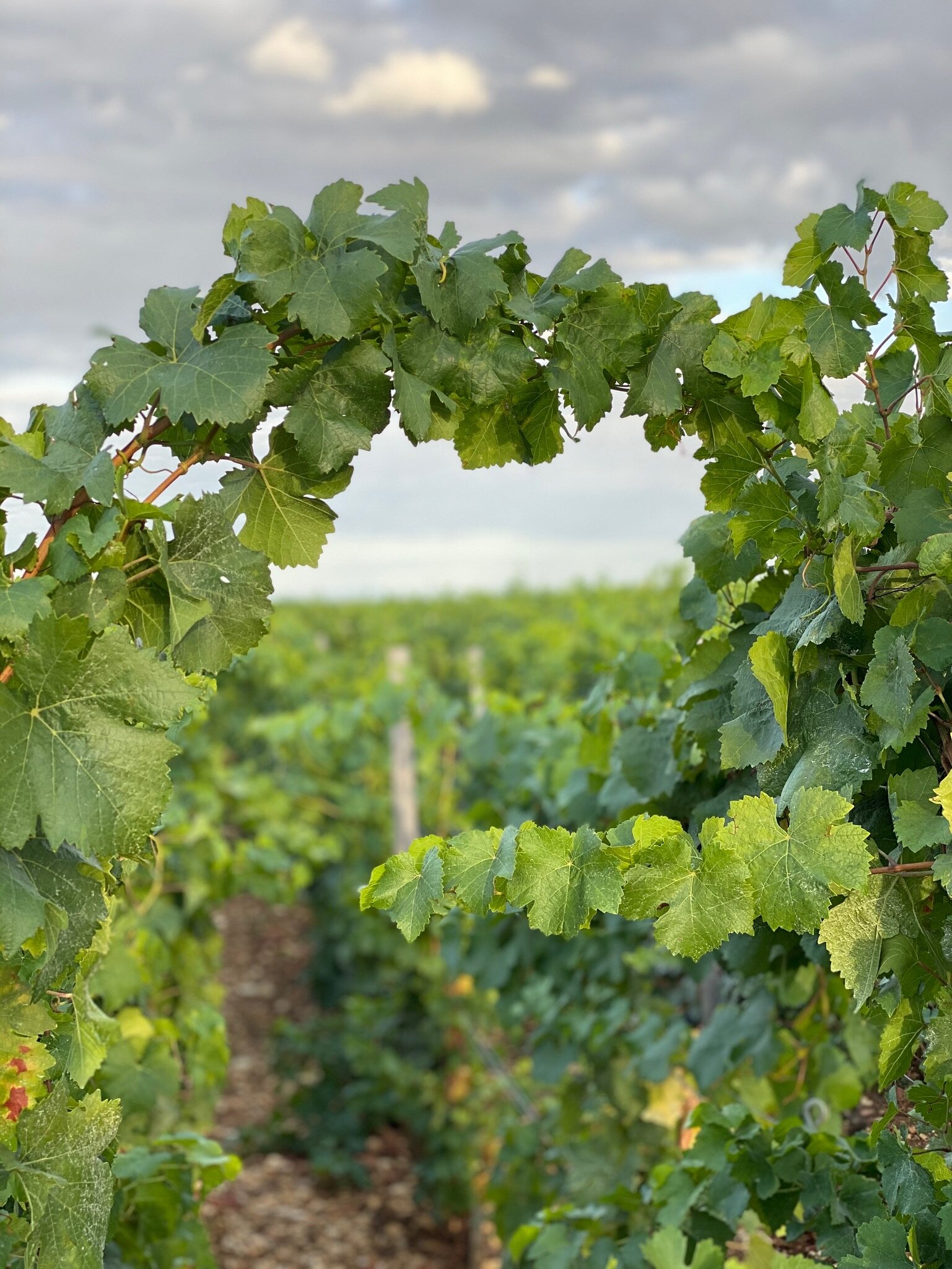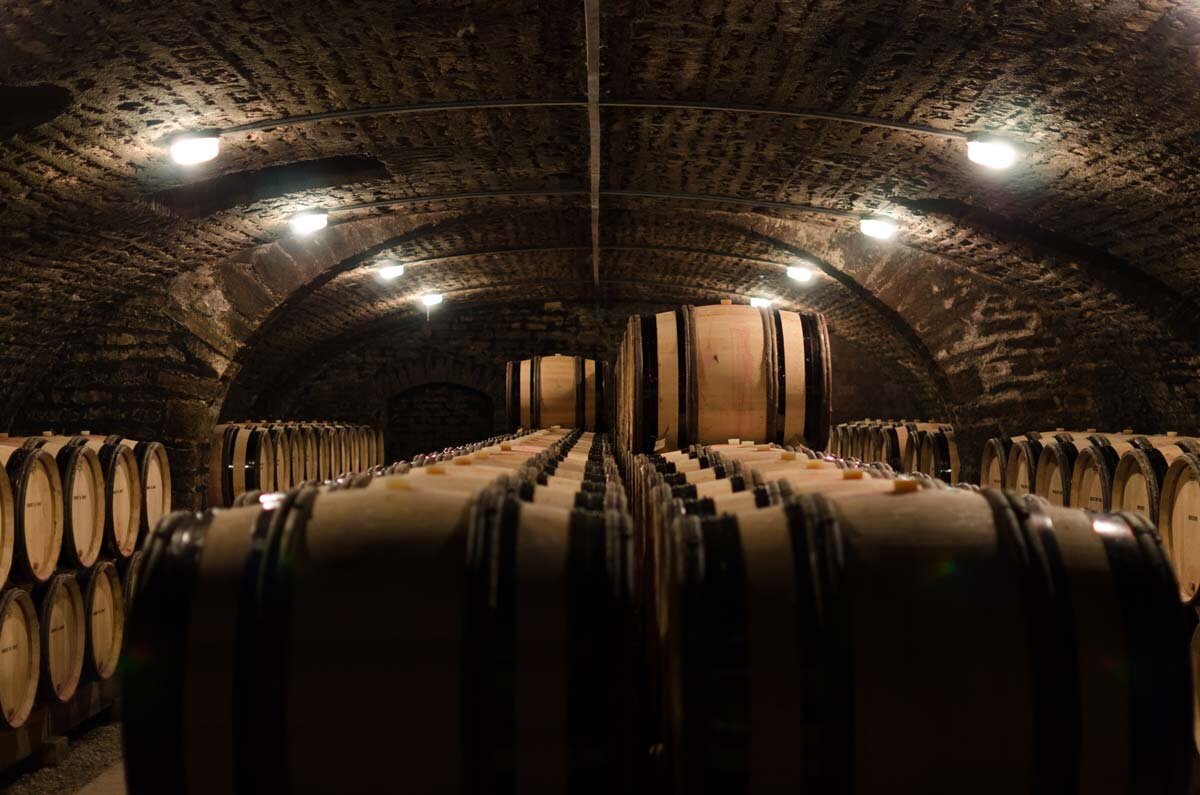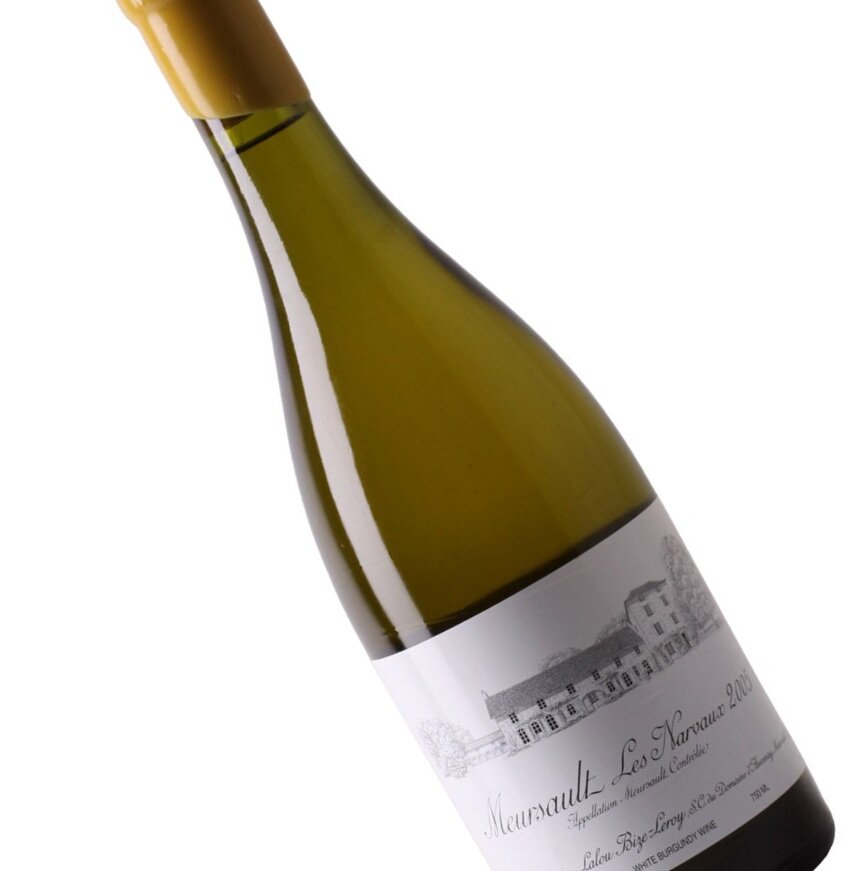DOMAINE D’AUVENAY
Saint-Romain
Domaine d’AUVENAY is Lalou Bize-Leroy’s crown jewel alongside LEROY. Close to her heart, this estate is important to her as it was her family's original domaine and therefore has the longest history of production associated with Leroy, predating Domaine Leroy.
The success story of the domaine d’AUVENAY started in 1868 with Maison Leroy, a négociant business founded by François Leroy. Lalou Bize-Leroy, françois’ great granddaughter, joined the family business in 1955. Unlike other négociants, Maison Leroy’s benchmark was to age the wines for as long as possible before releasing them for sale. Also, to guarantee the quality of the wines labelled under the name Leroy, Lalou Bize-Leroy would taste blind (and still does to this day!) hundreds of wines every single year to decide what to purchase for the Maison.
The house of Auvenay started to be used in 1966 by Madame Lalou Bize-Leroy to host grand wine tastings and dinners. Gifted chefs and politicians would be invited to come discover the best of what Burgundy has to offer. Numerous correspondence from Pierre Bocuse and the Troisgros brothers mention the incredible tastings that were organized at d’Auvenay and how special it had been to participate to such events. It’s important to remember that at that time, Domaine Leroy din’t existe and Domaine d’Auvenay was merely producing its own wines, Lalou Bize-Leroy’s main focus was on Maison Leroy.
Through the years it became more and more difficult to find growers with wines that met the strict standards worthy of the Maison Leroy label. Therefore, Lalou Bize-Leroy made the decision to expand Maison Leroy’s own vineyards. In 1988, she founded Domaine Leroy by purchasing, the estates of Charles Noëllat in Vosne-Romanée and of Philippe-Rémy in Gevrey-Chambertin. These purchases were facilitated by selling a proportion of shares of the Maison Leroy business to the Japanese luxury department store Takashimaya in 1988.
Interestingly, until 1988, Lalou was mostly famous for being one of the main shareholders of Domaine de la Romanée-Conti. Her father, Henry Leroy, had bought half of the domaine in 1942, when DRC was facing difficult times. As a result, on top of their négociant business, the Leroy family was the exclusive distributors of DRC internationally (excluding the UK market). At the time, Lalou was also involved with the wine making at the estate but the board didn’t see her involvement positively. Charismatic, Lalou wanted to implement innovative practices.
With Domaine Leroy, Lalou was finally able to put into practice her ideas in the vineyard and in the cellar. In the early mid90s, articles from the Wine Spectator in the US highlighted the excellence of Domaine Leroy’s wines, mentioning that their quality was on a par to most DRC wines if not more aromatic and complex. On top of that, tensions arose between the DRC board and Lalou Bize-Leroy because of the exclusive distribution she had over DRC wines on the export markets. In 1992, she was removed from the board. Since then Madame Leroy has been fully focused on Maison Leroy, Domaine d’Auvenay and Domaine Leroy.
Domaine d’Auvenay amounts to 4 hectares of vines spread over 16 different appellations. The estate counts prestigious appellations such as Chevalier Montrachet Grand Cru, Criots Batard Montrachet Grand Cru and Batard Montrachet Grand Cru, one of the latest additions to the domaine’s holding. The Chevalier Montrachet Grand Cru of Madame Leroy is for many the epitome of what a great white burgundy is.
Despite the numerous wines made from top vineyards, one of the wines that always come up in conversations when talking about d’Auvenay is their Aligoté. Long overlooked by producers in the region, Madame Leroy has proven that aligoté is a grape that can be fascinating when treated with care.
Incredibly rare, Domaine d’Auvenay wines have been admired by wine lovers around the world. It only adds to the mystery that it is close to impossible to be granted a visit with Lalou Bize Leroy at the d’Auvenay house. Being invited to Lalou Bize-Leroy’s own house is a rare privilege that only few people in this world have had. In only four decades the Queen of Burgundy has managed to build an estate that produces the best white wines of Burgundy.
Over the years, Lalou Bize-Leroy has surrounded herself with talented and dedicated people. Frédéric Roemer, has been working alongside her in the vineyards and the cellar for more that 30 years and Gilles Desprez, has been overseeing the distribution of her wines for years. Both of them have learned her ways and secrets and will hopefully help to continue the legacy of Leroy.
Together with the domaine wines, d’Auvenay and Leroy, Lalou Bize-Leroy releases the new offering of the négoce. The offering often focuses on older wines matching the last digit of the year. For example in 2020 she released the 2010s, 2000s, 1990s, 1980s, 1970s ,1960s etc. We remember really well selling the 1937s, 1947s, 1957s in 2017. It was memorable to have access to wines that had not moved from Burgundy for almost a century. Prior to releasing such old vintages the corks are systematically checked and changed when necessary to guarantee the longevity of the wines.
In the Vineyard
Since the very beginning Lalou Bize-Leroy has been committed to keep low yields, small berries and retaining the health of the domaine’s old vines.
To do so, her first decision when taking over the vineyards was to shift to organic practices, which at the time was revolutionary in Burgundy. Back in the early 90s, only Nicolas Joly in the Loire valley was managing his vineyards fully organically. It was crucial for Lalou Bize-Leroy to stop using pesticides, fertilizers, insecticides and herbicides as she believed, and still believes today, that such products kill life in both the soils and the vines. Her decisions soon resulted in lower yields and lead many of her neighbours to criticize her approach.
Ignoring all critics, Madame Leroy chose to explore further her beliefs and quickly moved to biodynamic farming as a holistic system from beginning to end. Constantly innovating, Lalou Bize-Leroy has also introduced the use of tisanes and herbs concoctions in her vineyards to reduce the use of sulfur.
The domaine’s viticulture methods are uncompromising, meticulous and very demanding. Lalou Bize-Leroy has up to 60 staff working for her during the season across Leroy and d’Auvenay. The vineyard workers perform rigorous pruning and replace each individual dead vine stock with a massal selection from the Domaine’s plants. Additionally, tressage is completed across all vineyards. Tressage is an alternative management technique in which the canopy is rolled instead of being hedged during the growing season. Madame Leroy strongly believes that hedging the vine is harmful and it is essential to not interfere with vegetative circle of the vine growth until harvest. Trained higher, the vines also adapt better to the varying weather and climate conditions.
As a result, the vines produce some of the lowest yields in Burgundy with an average 15-hectolitre per hectare. But more importantly, all that hard work in the vineyard makes for pure and concentrated wines with a magical energy.
In the Cellar
Domaine d’Auvenay wines are made in Saint Romain.
It’s interesting to note that Domaine d’Auvenay house is located about 200 metres higher than the Domaine Leroy’s winery in Vosne-Romanée. That small difference means that the cellars are colder. This explains why people often find d’Auvenay’s red wines less expressive when young when compared to Leroy’s wines. The reds of d’Auvenay need time to open up and reveal their true quality.
One of the most important innovations implemented by Lalou Bize-Leroy in the winery was to separate the pedicel from the rachis. At harvest, all bunches are thoroughly sorted and “resized”. A team of 40 people are needed to realise this meticulous work across both domaines. The result of this tremendous work is the perfect balance from a fully destemmed wine and a non-destemmed wine, acidity, tannins but also some fruits.
The whites are made using ancient and traditional method with an old-basket press.
Both red and white grapes are then put into tailor-made wooden fermentation vats that fit a specific parcel of vines. Every stage of the vinification is driven by the desire to preserve each terroir’s identity. The temperature of fermentation can reach 33°C to allow more extraction of flavours, and only indigenous yeasts are in operation. The wine is then transferred to casks with its lees, reds and whites are all matured in new oak barrels. 100% of the barrels come from the François Frères cooperage. Every year, Lalou Bize-Leroy receives the very best oaks coming from the rarest forests in France. Wines are racked in the middle of their élevage, and are bottled without fining or filtering.
With this level of attention to detail it’s not surprising that year after year d’AUVENAY Domaine produces such exceptional wines because of Lalou Size LEROY.
“The estate’s secrets are hidden in plain sight: in the vineyards.”
Criots-Bâtard-Montrachet Grand Cru
Acquired in 1990, d’Auvenay Criots Batard Montrachet is the oldest white Grand Cru in d’Auvenay’s portfolio. This is a really small plot of 0.06 hectares producing less than 300 bottles a year. The location is not ideal for this Grand Cru as d’Auvenay’s plot is located in the southern end corner of the Grand Cru, directly bordering Chassagne Montrachet Village Blanchots Dessus and En Joumoblot. But one could argue that it doesn’t seem to stop talented winegrowers to produce extraordinary wines as Hubert Lamy’s plot in Criots is also bordering the vineyard of En Joumoblot and is the source of equally outstanding wine.
Vintages released: 1990, 1991, 1992, 1993, 1994, 1995, 1996, 1997, 1998, 1999, 2000, 2001, 2002, 2003, 2004, 2005, 2006, 2007, 2011
Batard-Montrachet Grand Cru
Purchased in 2012.
Vintages released: 2012, 2013, 2014, 2015 (last release 2021)
Chevalier-Montrachet Grand Cru
Lalou Bize Leroy acquired this vineyard in 1992 right after acquiring also the Criots Batard Montrachet in 1990. The third white Grand Cru of d’Auvenay came in later in 2012 with the addition of the Batard Montrachet.
The 0.16-hectare plot was purchased from the Chartron family and has vines planted around in the 1940s.
Vintages released: 1992, 1993, 1994, 1995, 1997, 1998, 1999, 2000, 2001, 2002, 2003, 2004, 2005, 2006, 2007, 2009, 2011 and 2013
Mazis-Chambertin Grand Cru
Acquired in 1993, the Mazis Chambertin plot of Lalou Bize Leroy is ideally located, bordering Clos de Bèze in the north part. Covering 0.25 hectares of vines the plot was purchased from the Thomas Collignon family (famous for the hospices de Beaune Mazis Collignon donation).
Vintages released: 1993?, 1994, 1995, 1996, 1997, 1998, 1999, 2000, 2001, 2002, 2003, 2006, 2007, 2008, 2009, 2011, 2013, 2014
Bonnes-Mares Grand Cru
Auvenay is the smallest owner of Bonnes Mares with a total of 0.25 hectares of vines here. Two small plots separated by a tiny road, they are located on the southern end of the Grand Cru Bonnes Mares, above those of Vogue. Lalou Bize Leroy acquired the vineyard in 1993 for d’Auvenay from the Roumier family, probably exactly from Alain Roumier. Its soils are including both the red and white marns thus giving a perfect expression of this Climat Bonnes Mares.
Vintages released: 1993, 1994, 995, 1996, 2001, 2002, 2003, 2006, 2008, 2009, 2011, 2013, 2014
Meursault 1er Cru
Les Gouttes d’Or
First Vintage release for AUVENAY Goutte d’Or was 1996. Vintages released: 1996, 1997, 1998, 1999, 2000, 2001, 2002, 2003, 2004, 2005, 2006, 2007, 2009, 2011, 2014
Meurault Village
Pré de Manche
Vintages released: 2004, 2007
Meursault Village
Chaumes des Perrières
Vintages released: 1998, 2004, 2007 (last release 2021)
Meursault Village
Les Narvaux
Auvenay Meursault Narvaux production average is around 3000 bottles per year.
Vintages released: 1996, 1997, 1998, 1999, 2000, 2001, 2002, 2003, 2004, 2005, 2006, 2007 (last release 2021), 2008, 2009, 2011, 2013
Meursault Village
This Meursault Village from d’Auvenay is a blend of grapes coming from Narvaux, Chaumes, Pré de Manche.
Vintages released: 2001, 2005, 2006, 2008, 2009, 2011, 2014
Puligny-Montrachet 1er Cru
Les Folatières
Purchased in 1989.
Vintages released: 1989, 1990, 1991, 1992, 1993, 1994, 1995, 1996, 1997, 1998, 1999, 2000, 2001, 2002, 2003, 2004, 2005, 2006, 2007, 2008, 2009, 2011 (last release 2021), 2013
Puligny-Montrachet 1er Cru
En la Richarde
Vintages released: 2001, 2002, 2004, 2006, 2007, 2009
Puligny-Montrachet Village
Les Enseignières
Vintages released: 2012, 2013, 2014, 2015 (last release 2021)
Auxey-Duresses Village
Les Boutonniers
Vintages released: 1990, 1993, 1994, 2000, 2001, 2002, 2004, 2006
Auxey-Duresses Village
Les Clous
Vintages released: 2000, 2002, 2004, 2005, 2006, 2009 (last release in 2021)
Auxey-Duresses Village
La Macabrée
Vintages released: 2002, 2005 (last release in 2021), 2006, 2009
Auxey-Duresses Village
This Auxey-Duresses Village is a blend of Les Clous, Les Boutonniers, La Macabrée.
Vintages released: 1998, 1999, 2001, 2002, 2003, 2004, 2005, 2006, 2007
Bourgogne Aligoté
Sous Chatelet
One of the most iconic wine from d’Auvenay is the Bourgogne Aligoté Sous Chatelet. Made from a 0.33-hectare plot situated on a north-facing slope, this wine proves the Aligoté grape can produce extraordinary wines. The production average is around 1000 bottles per year for the AUVENAY Bourgogne Aligoté.
Vintages released: 2000, 2001, 2003, 2004, 2005, 2006, 2007, 2009, 2010, 2011, 2012, 2013, 2014 (last release in 2021), 2015, 2016 (released in 2021)






